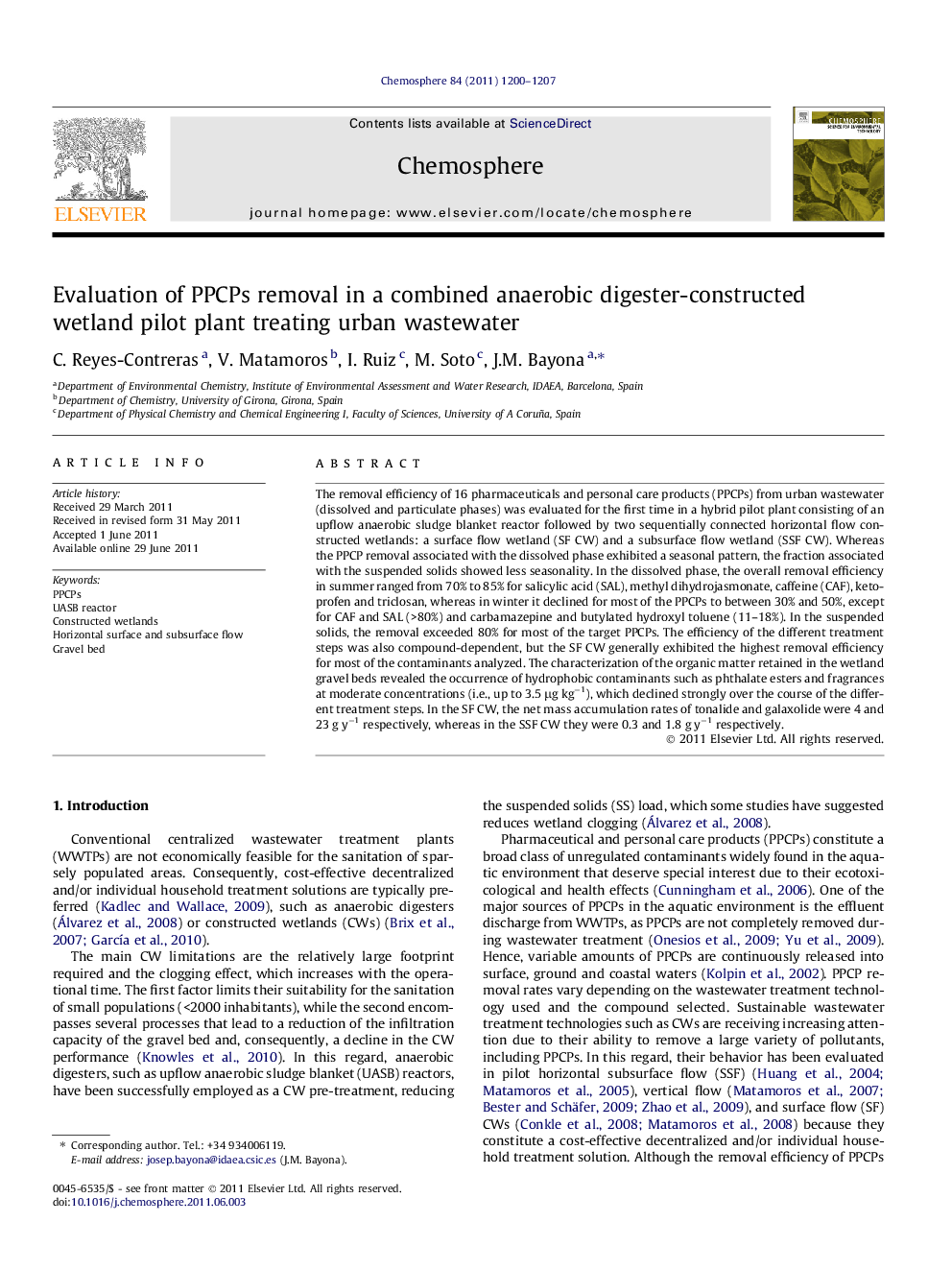| Article ID | Journal | Published Year | Pages | File Type |
|---|---|---|---|---|
| 4410818 | Chemosphere | 2011 | 8 Pages |
The removal efficiency of 16 pharmaceuticals and personal care products (PPCPs) from urban wastewater (dissolved and particulate phases) was evaluated for the first time in a hybrid pilot plant consisting of an upflow anaerobic sludge blanket reactor followed by two sequentially connected horizontal flow constructed wetlands: a surface flow wetland (SF CW) and a subsurface flow wetland (SSF CW). Whereas the PPCP removal associated with the dissolved phase exhibited a seasonal pattern, the fraction associated with the suspended solids showed less seasonality. In the dissolved phase, the overall removal efficiency in summer ranged from 70% to 85% for salicylic acid (SAL), methyl dihydrojasmonate, caffeine (CAF), ketoprofen and triclosan, whereas in winter it declined for most of the PPCPs to between 30% and 50%, except for CAF and SAL (>80%) and carbamazepine and butylated hydroxyl toluene (11–18%). In the suspended solids, the removal exceeded 80% for most of the target PPCPs. The efficiency of the different treatment steps was also compound-dependent, but the SF CW generally exhibited the highest removal efficiency for most of the contaminants analyzed. The characterization of the organic matter retained in the wetland gravel beds revealed the occurrence of hydrophobic contaminants such as phthalate esters and fragrances at moderate concentrations (i.e., up to 3.5 μg kg−1), which declined strongly over the course of the different treatment steps. In the SF CW, the net mass accumulation rates of tonalide and galaxolide were 4 and 23 g y−1 respectively, whereas in the SSF CW they were 0.3 and 1.8 g y−1 respectively.
► PPCP removal with dissolved phase exhibited a higher seasonal pattern than suspended solids. ► SF CW exhibited the highest removal efficiency. ► The apparent log Kd′ indicates that the fragrances and phthalate esters are sorbed by the SS. ► Wetland gravel beds revealed the occurrence of hydrophobic contaminants. ► Concentrations granular medium decreased exponentially as progressed through subsystems.
